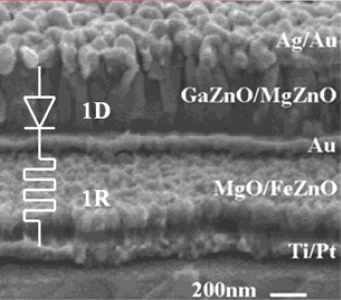Intellectual Property & Development Status
Information technology is facing increasing needs for systems-on-demand capable of task adaption on-the-fly and defect adaption in real-time at lower cost. High-performance electronic system combining the state-of-the-art processing logics, memories, and sensors on a single chip is highly desired. The challenge is in implementing an advanced reconfigurable switching matrix network that can be integrated with various functional subsystems. One application of such a switching matrix is nonvolatile memory. Furthermore, the advanced switching matrix architectures are becoming more critical in high density and high-performance systems. New embedded switching schemes should deliver high performance with large variations in device parameters and high level of defect density when these devices approach nanometer scale. To date, even the design of such switching matrices are based on different material systems and complicated fabrication processes resulting in extremely low yield and are therefore, impossible for commercial application.
Rutgers University researchers have invented a novel approach to integrate multifunctional and nanostructured ZnO devices to realize 3-D systems for reconfigurable electronics and optoelectronics. Such multifunctional ZnO structures, including doped and alloyed ternary compounds, polycrystalline and eptaxial films and heterostructures, and various nanostructures, will be used to make essential devices such as a memristor (R), thin film transistor (T), and diode (D). Monolithitcal integration of these devices leads to the full ZnO - based 1T1R and 1D1R structures as the reconfigurable switching matrices. The ZnO-based 1D1R, 1T1R switching matrices serve as the basic circuit building blocks for novel reconfigurable electronic and optoelectronic systems built on glass or on flexible substrates. These switching matrices can also be integrated with Si-CMOS.
Ultrahigh density nonvolatile memory, reconfigurable parallel computing, reconfigurable UV imaging sensor arrays, smart sensor and actuator array, user-defined digital logic, displays, etc.
- Low thermal budget
- High-density
- Ultrafast speed (switching, access time)
- Reconfigurability for high defect tolerance
- Low cost
- Robustness (e.g., radiation-hard).
Patent pending
http://rutgers.technologypublisher.com/files/sites/lu-2012-004-image.png
(Notes) set up so that URL only needed but ensure not an active link
Download PDF
Insert active link and change text Section to Download PDF
